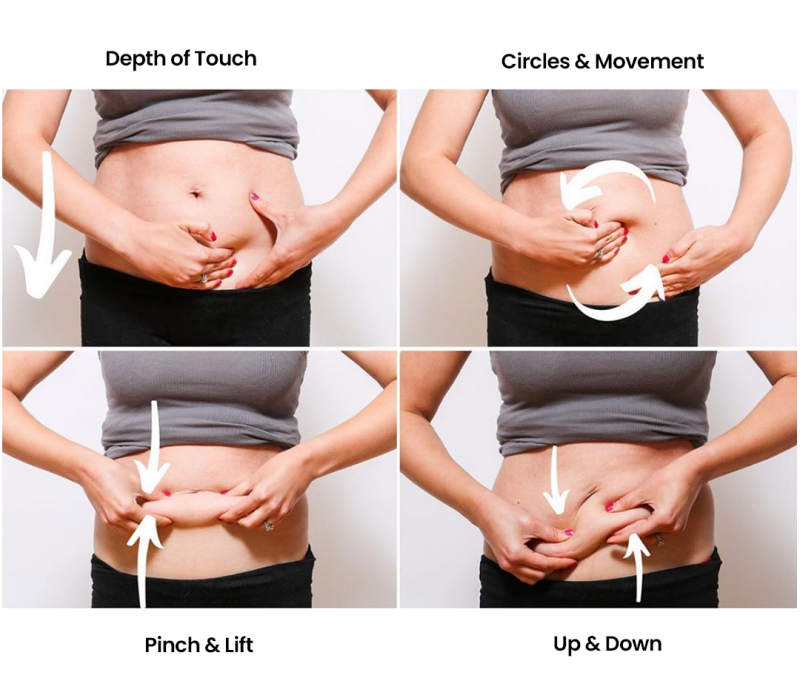Caring for your cesarean section scar is an important part of the recovery process after the birth of your child. Scar tissue is used by your body to reinforce the skin, muscle, and connective tissue that were cut during surgery. At the beginning of the healing process, scar tissue is laid down much like spaghetti in a bowl; it lacks organization and thus is not a strong structure. As you undergo the healing process, regular movement of the incision and your body help to provide structure and organization to the spaghetti-like scar tissue, increasing its ability to withstand stress from the regular loads encountered in your life. Below are some guidelines to help you heal.
Day 1 after C-Section to Recovery Week 2
Keep the incision dry in order to decrease the risk of infection.
Avoid underwear or tight pants that can irritate your incision or keep it from closing correctly.
Day 1 after C-Section to Recovery Week 6
Do tiny circles with light pressure about 3-4 inches from the incision site for the first 6 weeks. Spend 5 minutes a day at least 2 times a day on this.
Spend some time lying flat. This is helpful if you have noticed that you spend most of your time with the head of your bed at a slight incline or you are in a recliner a lot. This will keep your skin used to being stretched so you can stand without pain in your incision.
Recovery Week 6 and Beyond
Continue to draw tiny circles with light pressure now on top of the scar and underlying tissue for 5 minutes most days of the week. You may progress to rolling the scar and skin between your thumbs and the first one to two fingers.
You may begin to notice that sometimes the area underneath your scar feels tight and may experience a mild pulling sensation. This can be normal and often resolves with regular scar massage and activity. Consult your care provider if the scar looks red, swollen, or the pain is interfering with activity.
Consult your provider about a referral to a pelvic health specialized physical therapist if you experience any of the following common but not normal changes after the birth of your child:
Pain, especially of the abdomen, hip, low back, thoracic spine, pelvis, tailbone, shoulder or neck.
Pain with sitting, walking, moving in bed, ect.
Pain with intercourse, bowel movements, or urination
“Falling out feeling” of heaviness of your vagina
Urine leakage, of any amount - should return to normal within 6 weeks postpartum
Fecal leakage or constipation
A split in your abdominal muscle or your belly pooching out when you move
References
Croghan A, Hudelson S, Williams L, Hammond A. Cesarean Birth Recovery Guidelines. Heart of the Rockies Medical Center. Salidas, Colorado. PDF.
Mayo Clinic Staff. C-Section: What you can expect Nov 13, 2010.


